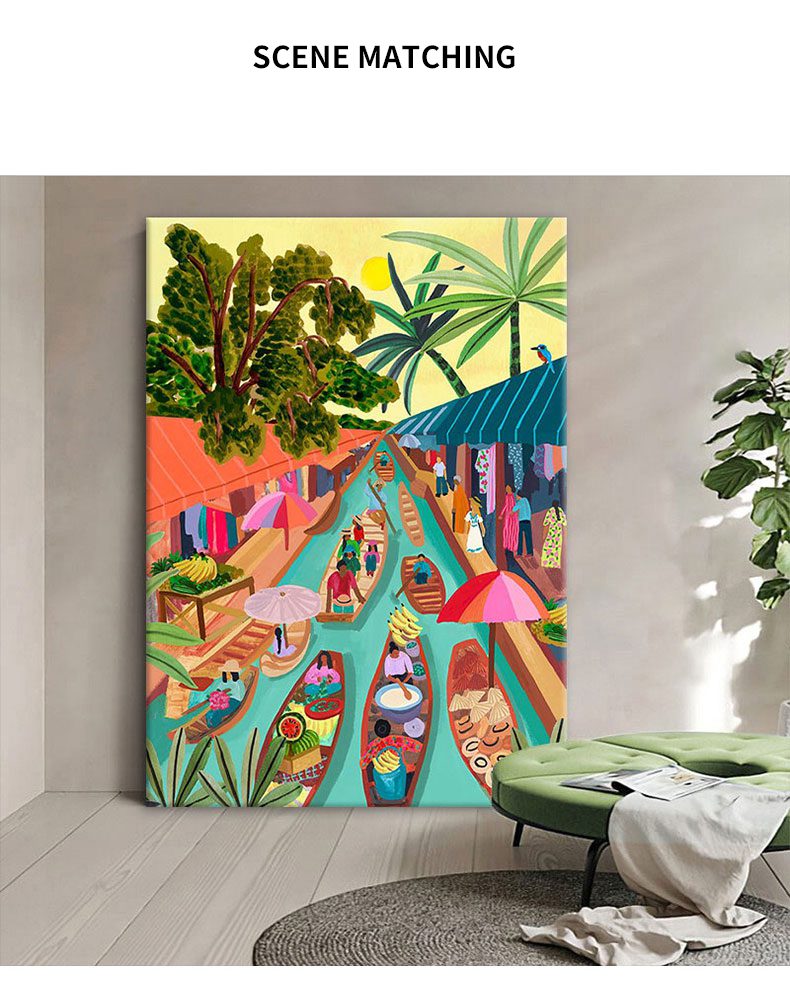The abstract hand-painted oil painting style emphasizes the abandonment of natural objects and expresses spiritual images through pure painting language and formal factors. Its core characteristics are as follows:
Non-representativeness: Abstract hand-painted oil paintings no longer depict concrete objects in reality and have little or no resemblance to natural images. Artists deny depicting specific objects and do not base their works on natural objects. They create merely through basic painting language and formal elements to express certain aesthetic experiences or spiritual contents such as ideas and emotions. For instance, Kandinsky’s works simplified the appearance of nature into simple images and conveyed inner emotions and concepts through abstract forms.
Emphasizing formal composition: Abstract hand-painted oil paintings have a strong appearance of formal composition, emphasizing the basic components of pure painting language such as points, lines, surfaces, colors, brushstrokes, and textures. Artists pay attention to the integrity of the composition of the picture, pursue the visual balance of symbolic shapes and colors in the picture, as well as the contrast and response of the forms. Mondrian’s “New Formalism” works, such as “Composition of Red, Yellow and Blue”, use geometric blocks to form the picture. Through ingenious division and combination, the plane is abstracted into a rhythmic and dynamic picture.
Subjective emotional expression: Abstract hand-painted oil painting is a spiritual exchange and emotional dialogue between the painter and the viewer. The artist expresses his inner world in a subjective way through shapes and colors. This form of expression is more complex than the external world perceived visually, inviting the audience to engage more deeply in creation and understanding. For instance, Pollock’s “action painting” style, by moving around the canvas and splashing paint, pours out the most primitive and passionate emotions deep in his heart without reservation.
Diversified development: Throughout the 20th century, abstractionism basically developed in two directions: lyrical abstraction and geometric abstraction. Lyrical abstraction (hot abstraction) is represented by Kandinsky, who creates works entirely or mainly through color and varied lines. Geometric abstraction (cold abstraction) is represented by Mondrian, who constructs works with geometric blocks. Furthermore, abstractionism has also integrated various anti-traditional artistic influences, such as those of Fauvism and Cubism, constantly evolving and innovating.
